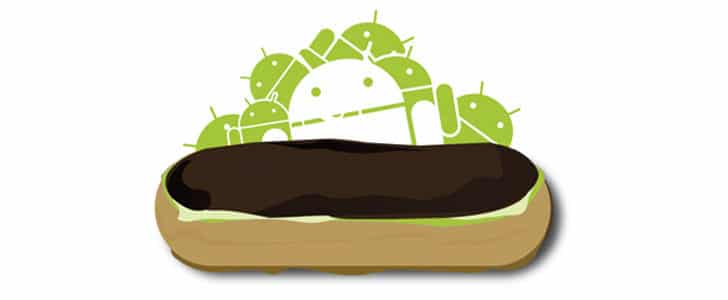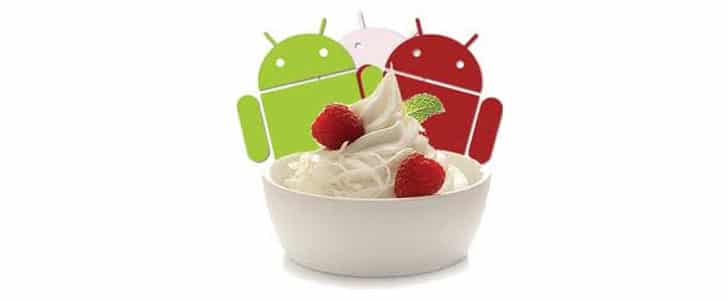Within the past few years there was a tight competition between various mobile operating systems. According to the current status the operating system which is gaining more territory is Android, fighting with iOS and Windows mobile.
History of Android goes back to 2003 when Android Inc was founded. In 2005 it was acquired by Google. This move made Android bigger as well as Google. In 2007 Open Handset Alliance came in to picture having the objective of setting open standards for mobile handsets. Android was their first product.

The development moved on and in 2007 they released their first beta version. Along with the Operating System they released a software development Kit (SDK) as well. Introduction of Open Source Linux based mobile OS was a huge move by then and lots of software developers were attracted to this.
Version History
Version 1.0
The very first version of Android was released on 2008 and came with HTC Dream. It introduced lots of features such as Android Market, Web browser, Google application and wireless connectivity support.
Version 1.1
This came out in 2009 as an update to the previous version fixing its bugs.
Version 1.5 – Cupcake
This came out in 2009. The name cupcake initiated a new line of Android named after food items, especially desserts. Cupcake is the first version that came with widget support. Other than that it came with copy-paste, mp4 support and stereo audio streaming via Bluetooth.

Version 1.6 – Donut
Donut came in 2009 and it introduced speech recognition to Android world. It increased the supported screen resolution to 800 X 480, optimized the built in camera usage and includde support for CDMA.

Version 2.0 – Éclair
2009 was a busy year for Android. Three versions came out with major updates. And this is the time that android attracted significant public attention.
Éclair came with Advanced messaging features, HTML 5 support in browser, support for better contrast ratio and advanced camera features such as flash, white balancing, effects and macro mode.

Version 2.2 – Froyo
Froyo came out in 2010 with lots of updates. The major focus was performance optimization and this was critical to compete with snappy performance of iOS. Other than that it came with an advanced browser with Chrome engine.
A very interesting feature in Froyo was Wi-Fi tethering. Using that you can use your phone as a Wi-FI hotspot as long as it is connected to a 3G data service.
As a display improvement it started supporting greater pixel density up to 320ppi. This met the requirement of Apples retina display. And this made possible to include 720p HD display in Smartphone.

Version 2.3 – Gingerbread
This came out in last quarter of 2010. The most important update in here is advanced power management and automated Garbage collector for memory management.
As software updates it introduced new download manager and advanced copy-paste functionality. In addition it extended the support for larger displays as well.
By then most of the Smartphone manufactures included various hardware sensors such as Accelerometer, Gyro scope, Proximity sensor and Barometer. Gingerbread started supporting those sensors and that paved way for developers to use them in their applications.

Version 3.0 – Honeycomb
This came out in 2011 as a very special version. This was only for Android Tablet Devices. The very first device that came with Honeycomb is Motorola Xoom tablet.
Since this version will be running on physically big screens they could come up with lots of innovative screen designs. The basic screen was having a Holographic effect and quick access to notifications. In addition there are Soft buttons at the bottom of the screen.
By this time most of the users wanted to play 3D games on their tablets. Therefore Honeycomb started supporting Multi-core processors and Hardware acceleration. Further it supported externally attached USB devices.

Version 4.0 – Ice Cream Sandwich
This is the latest version of Android that came in 2011 Google I/O event. The very first device which tasted Ice cream sandwich was Samsung Galaxy Nexus.
Again the main concern here was performance optimization and yes, it did a great job. In ICS most of the operations were very fluid, specially web browsing.
Other than that it introduced a long list of new features such as virtual buttons, improved voice recognition, face unlock, and 1080p video recording support.

What is Next?
This is the big question that everyone is asking. There are rumors that next version of android comes around 2012 July and its going be named as Key Lemon Pie. Some news say that it’s Jelly Bean. However if it’s coming in next July I believe that’s too soon. Most of the Smartphone and Tablets still could not taste Ice Cream Sandwich properly.
If you take a closer look in to Android project code names, you will notice that they start with Cupcake and ends with Ice cream sandwich following exact alphabetical order. According to this order the next code name has to be Jelly Bean, not Key Lemon Pie.
We will have to wait till the official announcement comes to get the accurate details of next version. However, there is one obvious fact that they will give maximum priority to improve performance in Android core.
Tags: #Android #HTC #Motorola #Samsung #Smartphone #Tablet
